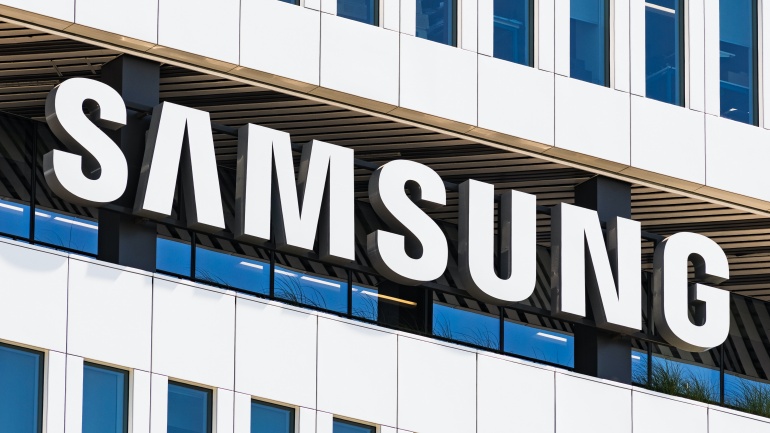Germany to retire its 3G network Deutsche Telekom, Telefonica Deutschland and Vodafone Germany have announced the dates of their 3G network service withdrawal. Deutsche Telekom announced that it will aim to shut down 3G networks by the summer of 2021, while the Vodafone Germany target date was announced to be a few months earlier. Similarly, Telefonica Deutschland has stated that it would like to switch off its 3G technology by the end of 2021. This means that Germany will be essentially dependent on LTE and 5G in just over a year. Deutsche Telekom says the coverage gaps left after the 3G shutdown will be filled by 4G. Read more at: https://tinyurl.com/y48ot9p5 Rogers Communications expanding 5G services On September 22, the Canadian communications and media company Rogers Communications announced the launch of 5G technology in five new cities. The Ericsson-powered operator has the largest 5G network in Canada. According to the…
The greatest motivation to move forward is to see your own company as your biggest competitor, says Yaniv Masjedi, a visionary and compelling marketing leader at Nextiva. The company’s Chief Marketing Officer since 2008, Yaniv Masjedi has been working to create strategies that drive awareness, strengthen the Nextiva brand, and share the story of the company’s unique customer-centric culture, known as “Amazing Service”. Yaniv Masjedi also initiates and manages programs related to brand management, demand generation and advertising. Read the full interview with this marketing guru to discover his core business principles, what drives the growth of a company, and what are the key factors in measuring success. My career began in sales, and having that background helped me tremendously when I decided to take the leap into marketing. With my sales background, I’m always thinking about how I can improve the experience for prospects, customers, and our sales…
Ribbon announces hybrid slicing for 5G Ribbon Communications, a provider of real time IP-based communications and software solutions, announced that it has partnered with Xilinx Inc. to develop a 5G hybrid slicing solution for next-generation networks. Slicing is important in 5G, as it enables the separate 5G integral service classes. Hard slicing is necessary to meet the strict requirements for availability, bandwidth and security of highly sensitive services, while soft slicing provides benign insulation for services with a lower critical limit value. Ribbon will highlight its 5G solutions, including hybrid slicing, during its 5G Perspectives virtual event on September 14, 2020. Read more at: https://tinyurl.com/y6tm8bqa Oi sells its mobile assets to Claro, Telefónica and TIM Three operators, Claro, Telefónica and TIM, formerly known as Telecom Italia, have won the bid for the Brazilian operator Oi’s mobile assets valued at more than $3 billion. In the past, these operators had a…
The South Korean tech giant Samsung has announced that it has signed a contract to supply network equipment to Verizon in the US. Samsung and Verizon’s wireless telecommunications solutions contract is worth about $ 6.6 billion according to information released on Monday, ensuring a great triumph for the South Korean seller against established competitors. Samsung Networks will supply network equipment and solutions, including 5G, to their American partner for the next five years, until December 2025. This new contract with Verizon is the largest that Samsung has ever received in its history. Samsung’s network business was one of the first to offer 5G network equipment to South Korean telecommunications companies when they launched their 5G networks in 2019. “We are pleased to expand our long-standing partnership with Verizon to advance their next-generation network evolution. With this latest long-term strategic contract, we will continue to push the boundaries of…
VoIP provider Dialpad has announced the acquisition of a video conferencing company, Highfive. The purpose of the purchase is to add room-based video to Dialpad’s suite of services, including computer video conferencing. Neither of the two companies released financial details of the acquisition. Dialpad is the company that developed the popular video conferencing service UberConference. UberConference does have a built-in video conferencing feature, and this acquisition will add enhancements to their existing video capabilities. To date, UberConference is mostly known for its calling features. Dialpad not only offers its users conference call solutions and a VoIP platform, but also has a contact center solution. As stated by Dialpad, by using Highfive technology, any home office or office space can become a smart meeting room. Best of all, this service will work with existing hardware and SIP-enabled conferencing providers. Craig Walker, CEO of Dialpad, believes that this acquisition…
Telefonica acquires Govertis Advisory Services The Spanish international telecommunications company, Telefonica, has announced the acquisition of the Valencia-based consulting company Govertis Advisory Services. The procurement was made through its subsidiary the cybersecurity company ElevenPaths. According to Telefonica, Govertis offers solutions that combine both legal and technological aspects of cybersecurity. The purchase of Govertis is related to Telefonica‘s ongoing investments in security through the development of proprietary solutions, the implementation of technologies in the global SOC network, and the acquisition of and investment in new companies. Eduard Chaveli, CEO and founder of Govertis, commented that this deal was a “natural next step in a long-standing relationship”. Read more at https://tinyurl.com/y2lr9pl7 Argentinian government freezes Telco prices Argentina‘s government has extended a ruling applicable to Internet, mobile and pay-TV providers, preventing them from raising their prices until the end of 2020. These measurements were first implemented in May of this year to combat…
Yealink is a global brand that specializes in video conferencing, voice communications and collaboration solutions. For the third year, the company has topped the list in the SIP phone sector with a market share of 29.5% in 2019. This announcement was according to the latest Global Enterprise Communications Platforms and Endpoints Market report by Frost & Sullivan. Yealink is one of the leading service providers in more than 140 countries and regions. For three years, it has led the SIP phone category and has steadily increased its market share. The company not only constantly focuses on enterprise communications and increasing their competitiveness, but the worldwide services provided by Yealink have received the highest customer satisfaction ratings. One of Yealink’s main product lines are the T5, T4, T3 and T2 series phones. These phones are designed for a variety of business demands and use-cases to meet the specific needs…
DartPoints collaborates with LOGIX for interconnection services in Texas DartPoints and LOGIX are partnering to provide Texas with interconnection. LOGIX’s network will interconnect with DartPoints’ facilities throughout Texas, resulting in enhanced regional connectivity between each endpoint, and providing one-stop access to more than 150 regional, national and international data centers and global websites. With this collaboration between the two companies, DartPoints’ customers will gain access to LOGIX’s extensive fibre network, and get greater access to edge interconnection points. Read more at https://tinyurl.com/y6gy8xwh Voxox and Passage Telecom are launching a cloud phone Voxox, an innovator in cloud communications solutions, and Passage Telecom, Nigeria’s leading ISP, have announced their partnership. Passage Telecom will now offer Voxox Cloud Phone services in Nigeria, which will be hosted from Voxox’s US and European data centers. This is the first deployment of Voxox Cloud Phone on the African continent, while Passage Telecom currently only serves Nigerian…
Paladin Technologies, Canada’s largest integrator of complex systems, has announced that it now offers inbound and outbound PSTN calling capabilities, including support for traditional PBX-based phone systems, in Microsoft Teams. It was decided to launch this new service for the purpose of supporting the rapidly rising number of active users due to Covid-19. Paladin’s new Voice in Teams feature expands its wide range of unified communications and telephony solutions to make it easier for Microsoft Teams users to reach customers on the phone without the need for any additional handsets. This advancement supports enterprise mobility and adaptation at a time when remote work has significantly increased. The end-to-end encrypted solution, which provides complete carrier, SIP and SBC services, is now available internationally in more than 78 countries, and fully supports toll-free and emergency services backed by enterprise-level SLAs. “This is an incredible product and we’re excited to offer…
Microsoft to continue talks to buy TikTok from ByteDance Microsoft has announced that it is prepared to continue discussions for the acquisition of popular short-video app TikTok from Chinese internet giant ByteDance. In a statement, the company said that it is committed to acquiring TikTok “subject to a complete security review and providing proper economic benefits to the United States, including the United States Treasury.” Microsoft made the statement following a conversation between its CEO Satya Nadella and US President Donald Trump. The company said it would ensure that all private data of TikTok’s American users is transferred to and remains in the United States. Read more at https://tinyurl.com/y69w8a4b Samsung’s Galaxy Z Fold 2 is official, comes with a ton of improvements Samsung has officially introduced a range of new premium mobile devices at its Unpacked 2020 event live streamed from Korea. Among others, the company is launching the Samsung Galaxy…













